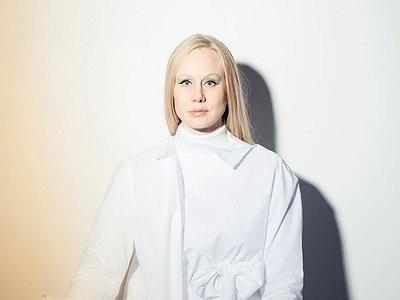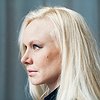Part 1
Name: Susanna
Nationality: Norwegian
Occupation: Vocalist, musician, label owner
Current Release: Go Dig My Grave on SusannaSonata
Recommendations: I very much like the art of late Marjorie Cameron, which I discovered on one of my stays in Los Angeles when I was making the ‘Triangle’ album. I was so lucky to get the permission to use two of her pictures ‘West Angel’ and ‘East Angel’ for my album cover. I recommend the book ‘Songs for the Witch Woman’ about her and with a lot of her pictures, and the original ‘Songs for the Witch Woman’ with poetry by her husband John Parsons and her illustrations to the poems.
Website / Contact: If you enjoyed this interview with Susanna, check out her website susannamagical.com for more information and sounds.
When did you start writing/producing music - and what or who were your early passions and influences? What is it about music and/or sound that drew you to it?
I started to write a little bit when I was a teenager, but I didn’t really get in to it before my early 20s when I was encouraged by my singing teacher. I have been singing all my life though, and been listening a lot to pop music and jazz from the age of 11, and in high school I came to know some of the records by Joni Mitchell, Leonard Cohen and Nina Simone. They are the artists who have made a great influence on my song-writing. Both Norwegian/European jazz, folk music, acoustic instruments and sort-of pure sources of sound, combined with more electronic outputs has inspired me to make my own musical world. Music has always been my way of expressing myself and my outlet, even though the form of it is constantly changing throughout my life.
For most artists, originality is first preceded by a phase of learning and, often, emulating others. How would you describe your own development as an artist and the transition towards your own voice? What is the relationship between copying, learning and your own creativity?
It’s essential as a singer to learn by listening and copying. First, I learned from my sisters and brothers singing to me when I was a child, then I learned from Whitney Houston, Olivia Newton John and Mariah Carey. Later came jazz singers like Chet Baker, Monica Zetterlund, and then Joni Mitchell, Bjork etc at the same time as a bunch of pop and RnB singers. I think especially the jazz as a genre has influenced me on my road towards finding my own voice, because of the focus on the individual sound and personal versions of songs.
What were your main compositional- and production-challenges in the beginning and how have they changed over time?
In the beginning, it was hard to trust that I was able to make something new, it has somehow become easier to walk through the door into the unknown to create. I’ve had periods of doubt where I wondered if I would be able to make more music. It’s a magical process when it hits; to make something out of nothing, and it’s probably one of the best things I do.
What was your first studio like? How and for what reasons has your set-up evolved over the years and what are currently some of the most important pieces of gear for you?
My first studios were different forms of home studios. I got a microphone quite early on, just an ordinary Shure 58- mostly for live use, but I used it for recording as well. I bought a FOSTEX four track cassette recorder when I was around 17, and recorded layers of voice on it. Sometime later I started using a computer, and I studied Music Technology at the University in Oslo which was still very basic at the time, I guess they’re doing more advanced things now. The most important pieces of gear are still my different microphones, and ways of recording - either through my Mac or through a hard-disk recorder.
How do you make use of technology? In terms of the feedback mechanism between technology and creativity, what do humans excel at, what do machines excel at?
My set-up has evolved with the digital and technical revolution I suppose. I have never been a techno-nerd but the whole time it’s been very connected to the music, so I learn to use new devices through making music. When I want to do specific things, I have to learn to do it. It’s often a frustrating way of working, because I want to do stuff I don’t know how to do all the time. But at the same time, I get to experiment and use the tools in different ways than if I had memorised the manual.
I have learned so much from recording myself and listening back, it’s turned out to be a substantial part of my artistic work.
Production tools, from instruments to complex software environments, contribute to the compositional process. How does this manifest itself in your work? Can you describe the co-authorship between yourself and your tools?
The different tools I use will always affect how and what I am making. When I worked on the ‘Triangle’ album (2016), I went deeper into the technology, using processing in the recording and composition. It was a great way to push into various landscapes and sound worlds that were new to me, and there is still so many things to do and find out - so I am looking forward to keep up that way of working.
Collaborations can take on many forms. What role do they play in your approach and what are your preferred ways of engaging with other creatives through, for example, file sharing, jamming or just talking about ideas?
I have had great pleasure in collaborating with several artists, sometimes we have a dialogue about what we are going to make, and sometimes we send rough ideas and demos, sounds, words and/or melodies and harmonies back and forth. It’s an excellent way of trying to see your own work from the outside, to put it back to back with someone else’s.






